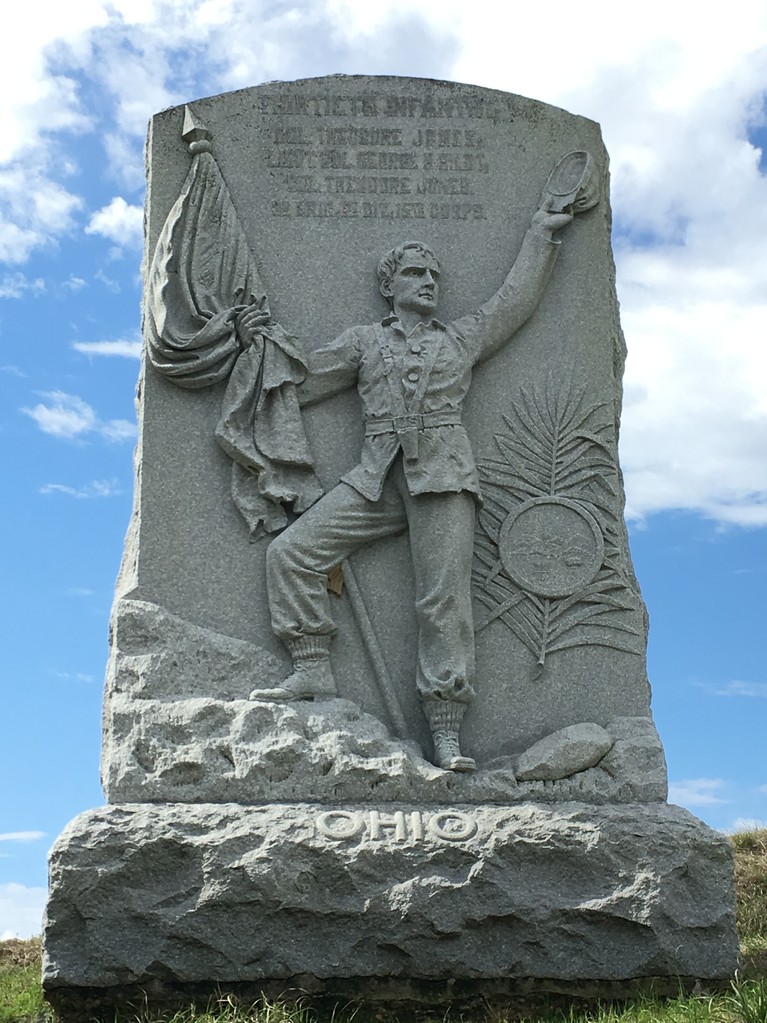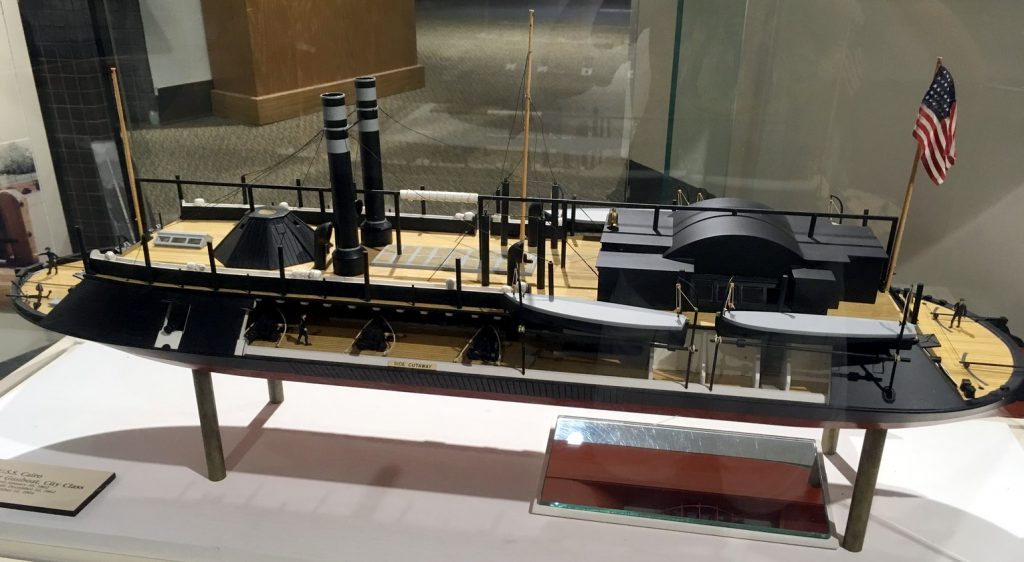The RV Park is near downtown, operated by a casino, and is very convenient for visiting the city.
Our main objective was to see the Vicksburg National Military Park. Abraham Lincoln’s strategy was to control the Mississippi River, splitting the Confederacy and depriving it of a major supply route. Vicksburg was the major stronghold on the river. Its location atop a tall bluff allowed defenders to repel many attacks by river. Ulysses S. Grant led an attack from the land side which was unsuccessful and then laid siege to the town, eventually forcing the defenders to surrender. The battlefield at Vicksburg is quite an amazing topography of hills and ravines leading up to a high ridge that was used as the forward defensive line. It was hard for us to imagine how an army managed to maneuver through this landscape without getting annihilated, and in fact the attackers had extremely high casualty rates. The states whose soldiers participated have erected monuments all over the battlefield.
The first monument below is that of Pennsylvania. The busts on the front are those of the commanders of the five Pennsylvania regiments that served at Vicksburg. On the left is John Curtin who led the 45th PA Infantry. Bob’s great grandfather, Henry Clay Holter, served in the 45th. The second monument is that of the 30th Ohio Infantry. Bob’s great great grandfather, Erasmus Joseph Alton, took part in Grant’s second assault on Vicksburg on May 22, 1863.



Also at the battlefield is the USS Cairo Museum. The Cairo was one of a fleet of ironclad steam driven riverboats used during the war. It was the first ship to be sunk by a mine. The remains were found in the riverbed many years later. Pieces of the hull, paddle wheel, boilers, and armor cladding were recovered and reassembled. The remains of the ship are displayed outside the museum under a large tent. A bunch of smaller artifacts were also found and put on display inside the museum.




After we left the battlefield, we stopped briefly at the Lower Mississippi River Museum. The most interesting part was a tow boat that was open for walkthroughs. It gave us a nice sense of the working boats we’d observed on the river.
